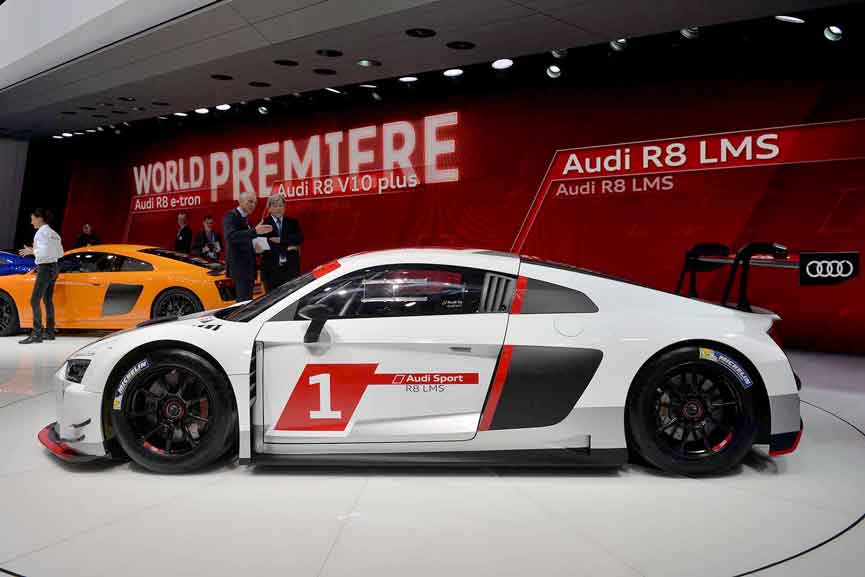Audi R8 LMS - A True Example of Reliability and Speed
Audi R8 LMS is one of the most successful racing cars made by the factory in the German city of Ingolstadt. Between 2009 and 2015, this model has won 28 GT Championships and scored eight wins in the 24-hour races.
Constantly improved and developed by quattro GmbH, this car instantly became one of the teams’ favorite and probably exceeded many expectations after having proved to be fast, reliable, and more than competitive against the likes of Mercedes, Aston Martin, McLaren, Porsche, Lamborghini and other reputable manufacturers.
First model introduced in 2008
The first model of Audi R8 LMS was introduced at the 2008 Essen Motor Show. Based on the R8 road version, LMS had a V10 engine which produced more than 500 horsepower. The first model was an almost completely race-prepared GT3 car. A new six-speed sequential manual transmission was developed for the car as well as the aerodynamic works and a huge rear spoiler.
Audi had to made one significant change for this model. One of the manufacturer’s trademarks, quattro four-wheel drive system was changed to the rear-wheel drive because of the GT3 regulations.
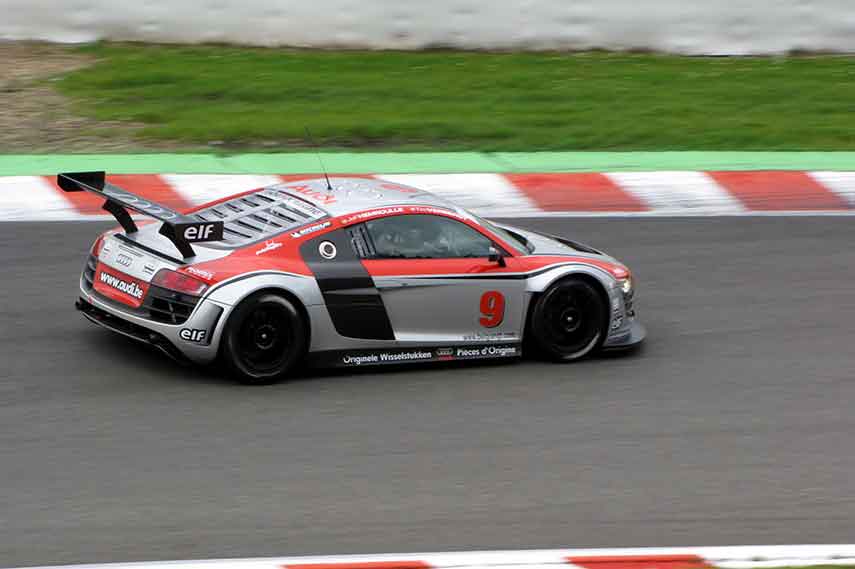
The 2009 Audi R8 LMS
The success was imminent
The first series of 12 cars for 2009 was immediately sold out at a cost of 262.000 euros, which was the price for the European market, and it was 2.5 times more expensive than the basic model, so another contingent was made in the following two years without any major modifications. The results Audi R8 LMS made on the tracks around the world were magnificent. During three years, Audi R8 LMS won a total of 115 races, including 24h of Spa and 12h of Sebring, and 12 championship titles, but still missed to win the Nurburgring endurance race – one of the priorities for the manufacturer.
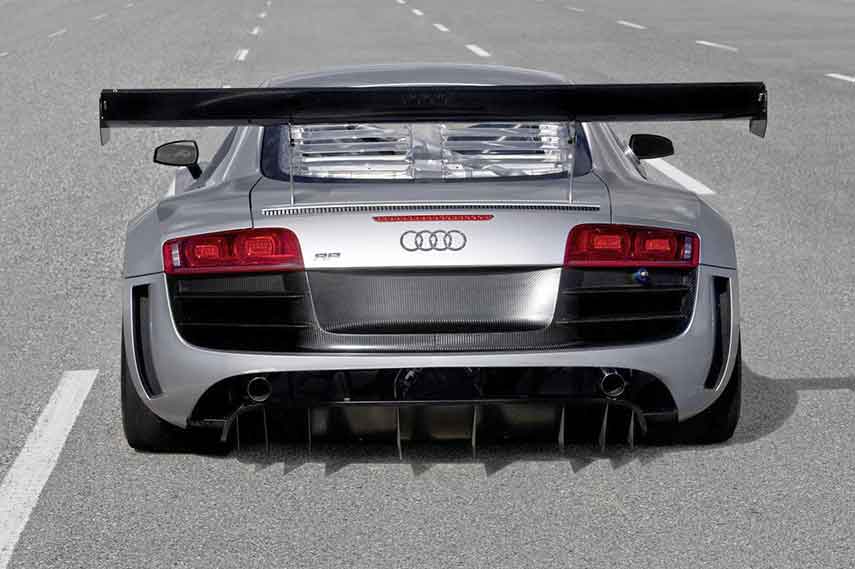
Audi R8 LMS managed to win 12 championship titles in three years
Audi R8 LMS Evolution
In 2010, Audi launched a new, upgraded version of R8 LMS, naming it Evolution. That car had improved engine cooling system capacity, electronic and exhaust system optimized for racing, and a 6-speed transmission which could be inspected easier, without dismantling of the entire installation. This model was a bit more expensive and was sold at the price of 298 thousand euros.
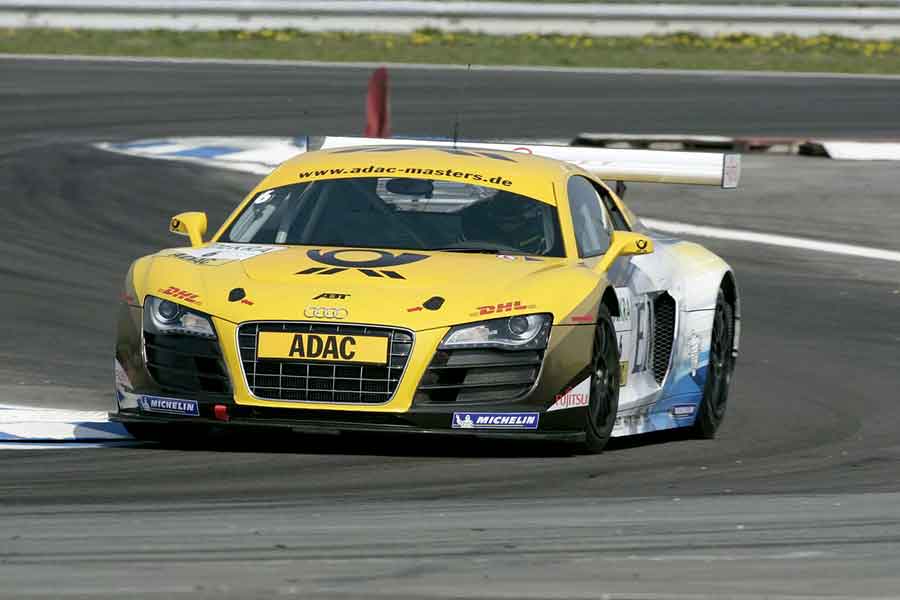
Audi R8 LMS Evolution, 2010
New Audi R8 LMS Ultra launched in 2012
With a lot of feedback from the customers, Audi launched a new and improved R8 LMS model called Ultra in 2012. The new model had many improvements, especially in terms of safety. It became lighter than the first R8 LMS and became easier for handling. It was still powered by a 5.2 liter V10 engine with 570 horsepower. The new exhaust system was installed, as well the complete cooling systemthe rear wing was also modified while the chassis also went through some modifications.
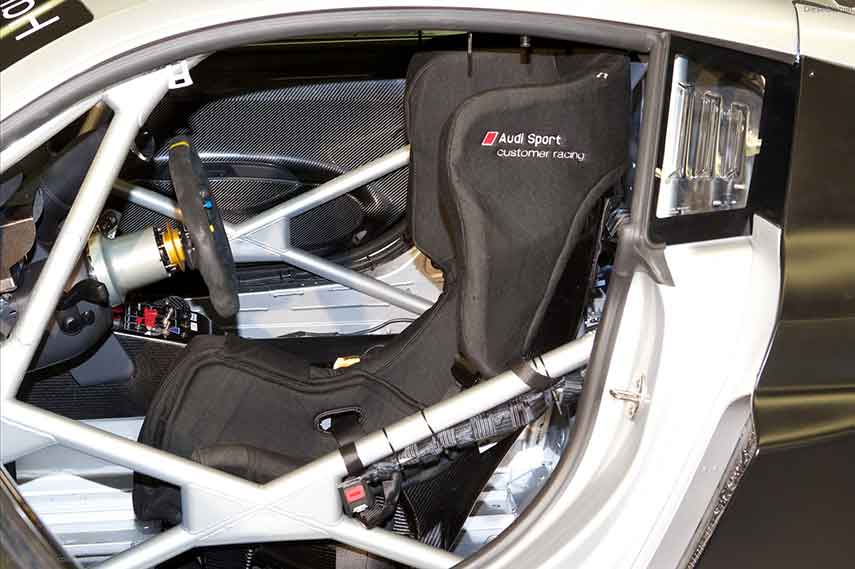
Audi R8 LMS Ultra interior
The price of the car which became available in March of 2012 was also new and much higher than for the previous model, but success was always expensive, and this one costed 329.900 euros.
The modified Audi R8 LMS Ultra, prepared for the season of 2013, was introduced at Geneva Motor Show. Not so many changes were made from the previous model. The designers and engineers primarily focused at aerodynamics. The main change was a new under-floor element that channels the air more precisely into the two wheel arches.
Another improvement were lighter wheels made of forged aluminum. A new windshield was three kilograms lighter than on the previous model while the front suspensions got a new geometry to prevent the tendency of diving under braking. Considering the price of the 2012 model, the increase wasn’t so big and the 2013 Audi R8 LMS Ultra was available at the cost of 339.000 euros.
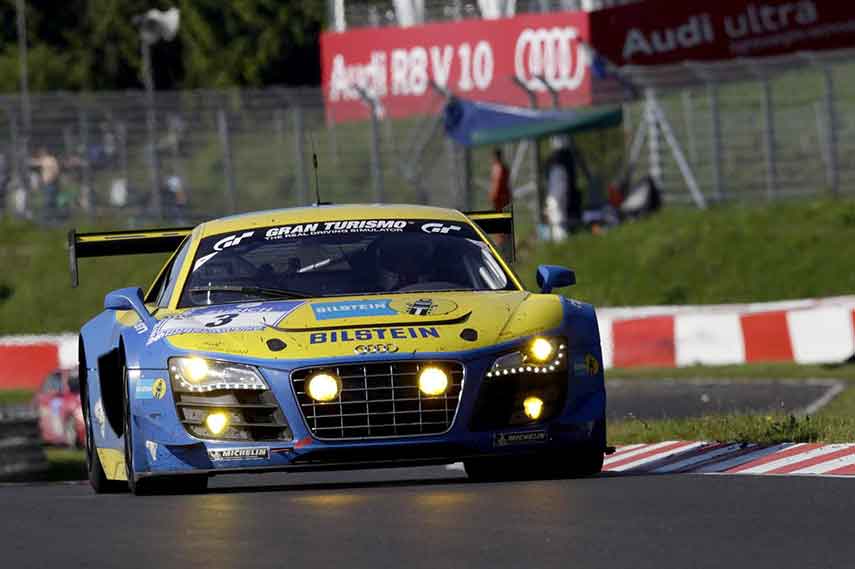
2012 Audi R8 LMS Ultra at Nurburgring
Nurburgring was finally conquered
In 2014, Audi, with its R8 LMS, finally earned a jewel that was missing in the crown. With an experienced team of drivers, Phoenix Racing won the 24h of Nurburgring after a big battle against the defending champions, Mercedes’ SLS AMG GT3. Audi R8 LMS, this time prepared by Belgian Team WRT, managed to defend the crown at Nordschleife in 2015.

Audi R8 LMS triumphed at the 2014 and 2015 Nurburgring 24h
New GT3 model prepared for 2016
Another development of the Audi R8 LMS was made during 2015 to become available in the following year at a price of 359.000 euros, with a starter and parts package increasing the price up to almost 400.000. The modified car has 585 horsepower from a 5.2 liter V10 engine. The weight of the car was reduced by 25 kg to 1225 kg after the whole bodywork was made of carbon-fiber. Only the chassis on its own is 30 kg lighter and now weighs 252 kg. The six-speed transmission with paddle shifters is completely new while the electronics was also almost completely renewed to enable faster responses.
The new model introduced a rescue opening in the roof, similar to the one on DTM cars, which wasn’t seen before on any GT3 car. After an accident, it allows the driver’s helmet to be lifted in a way that avoids straining the spinal column.
Video : The sound of Audi R8 LMS on track
Aerodynamics was also an important of the progress, and engineers implemented new ideas for better results. The cooling area of the radiator at the front increased the airflow rate, which resulted in better handling of the maximum outside air temperature. For the first time, the suspension uses wishbones which are designed strictly for racingan independent double wishbone suspension damper struts with coil spring adjustable dampers.
The start of the 2016 racing season was good, after scoring a win in 24 Hours of Dubai and a class win in 24 Hours of Daytona. Considering the dedication and experience of the ’Four rings’ engineers, we can expect more of the same from Audi R8 LMS in the future.
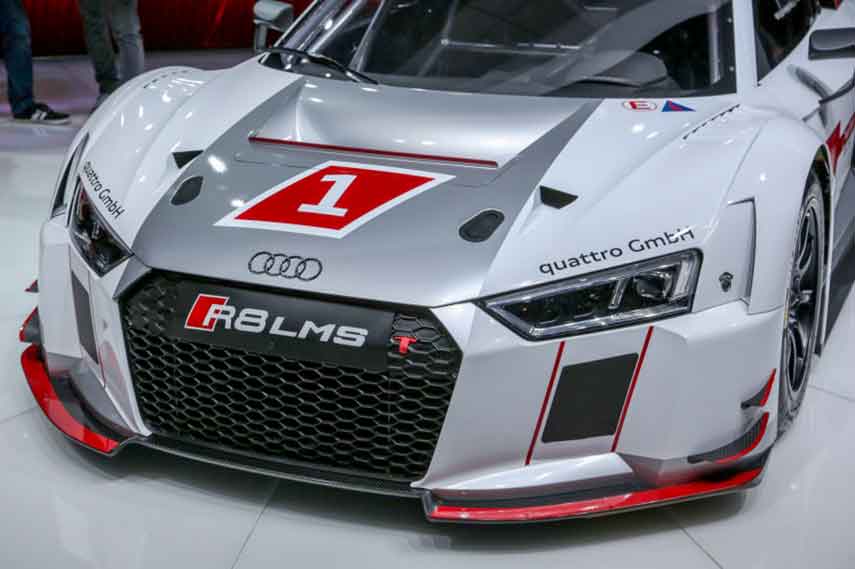
Audi R8 LMS exhibited in 2016
2016 Audi R8 LMS specification
Length: 4.583 mm
Width: 1.997 mm
Height: 1.171 mm
Curb weight: 1.225 kg
Engine: V10, Mid Longitudinal positioned with natural aspiration
Valve train: 5 valves per cylinder
Torque: 550 nm
Fuel feed: Direct injection
Displacement: 5.200 cc
Power: 430 kw/576.6 bhp
Specific output: 110.88 bhp per litre
Transmission: Sequential 6-speed
Clutch: Electro hydraulic, 3-Plate
Body &frame: Aluminum and Carbon Fibre Audi Space Frame with Stressed Steel Roll Cage, Carbon Fibre and Aluminum Panels
Wheel type: Forged aluminium
Front tires: 30-68/18
Rear tires: 31-71/18
Front wheels: 45.7 x 31.8 cm
Rear wheels: 5.7 x 33.0 cm
Steering: Rack and pinion
Suspension: Double wishbone (front and rear)
Fuel capacity: 120 litres
Photos: newwallpapers1.com, wikimedia.org, conceptcarz.com, dieselstation.com, auto-power-girl.com, forcegt.com, caranddriver.com.


